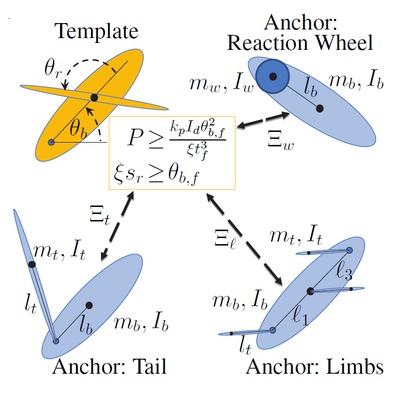
This paper develops a comparative framework for the design of an actuated inertial appendage for planar reorientation. We define the Inertial Reorientation template, the simplest model of this behavior, and leverage its linear dynamics to reveal the design constraints linking a task with the body designs capable of completing it. As practicable inertial appendage designs lead to physical bodies that are generally more complex, we advance a notion of “anchoring” whereby a judicious choice of physical design in concert with an appropriate control policy yields a system whose closed loop dynamics are sufficiently captured by the template as to permit all further design to take place in its far simpler parameter space. This approach is effective and accurate over the diverse design spaces afforded by existing platforms, enabling performance comparison through the shared task space. We analyze examples from the literature and find advantages to each body type, but conclude that tails provide the highest potential performance for reasonable designs. Thus motivated, we build a physical example by retrofitting a tail to a RHex robot and present empirical evidence of its efficacy.
For more information: Kod*lab

